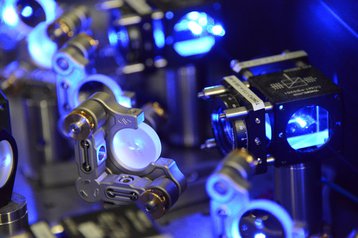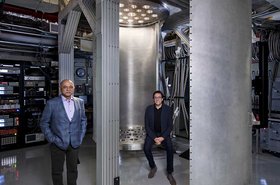The Defense Advanced Research Projects Agency (DARPA) has partnered with three companies for a new quantum computing program aimed at developing utility-scale systems.
The US R&D agency also selected Intel and the University of California, San Diego (UC San Diego) to join a program aimed at shoring up IT against cyberattacks.
For the Underexplored Systems for Utility-Scale Quantum Computing (US2QC) program, DARPA chose Atom Computing, PsiQuantum, and Microsoft.
The three companies will gain funding and assistance in government verification. They will present their plans to create a utility-scale quantum computer, and DARPA will help guide a more rigorous system design focused on all of the components and sub-systems required to build such a computer.
Experts from government laboratories and federally funded research and development centers will also evaluate the concepts over the course of the five-year program.
Californian startup Atom Computing said that it will focus on the scalability of atomic array-based quantum computing, after becoming one of the first companies to develop a 100-qubit prototype of that approach.
“In order to realize the scaling advantages of our quantum computing technology, there are a number of engineering challenges that need to be overcome. With DARPA’s support, we will be able to accelerate our development timeframe,” said Rob Hays, CEO of Atom Computing.
“We are honored to be selected for such an important program to advance Atom Computing and the United States toward utility-scale quantum computing.”
PsiQuantum, another California-based startup, is focused on photonic quantum computing. The company last October signed a $22.5 million contract with the Air Force Research Laboratory to co-design quantum photonic chips, which will be built by GlobalFoundries.
"Using single photons as qubits offers huge advantages, yet this approach to quantum computing has been surprisingly underexplored, especially in the United States," added Jeremy O’Brien, PsiQuantum CEO and co-founder. "The advantages of the photonic approach – including its potential to leverage existing semiconductor manufacturing techniques – are most apparent at scale, and we believe this was a major contributing factor in the contract being awarded."
Microsoft, meanwhile, is trying to develop a system using topological qubits.
Rather than having bits that are either in the state of 0 or 1, like classical computers, or having trapped quantum bits (qubits) that can be in the state of 0, 1 (both states at once, known as superposition) like in the circuit model, the Microsoft approach is perhaps even more complicated.
The four-dimensional path of two-dimensional quasiparticles called ‘anyons’ are used to form braids in a three-dimensional spacetime, which are then used to form the logic gates of the computer.
"Microsoft has taken a more challenging, but what we believe to be a more promising path towards scaled quantum computing and designed our machine using topological qubits," Julie Love, general manager of the quantum program at Microsoft, said.
"Our unique qubit architecture is theorized to enable our quantum machine to be small enough to fit in a closet, fast enough to solve problems in a practical timeframe, and have the capability to control more than one million qubits."
All three approaches are different to the more common approach taken by Google, IBM, and other major quantum players.
“The goal of US2QC is to reduce the danger of strategic surprise from underexplored quantum computing systems," Dr. Joe Altepeter, US2QC program manager in DARPA’s Defense Sciences Office, said. "We put out a call last year saying that if anyone thought they had a truly revolutionary approach to building a useful quantum computer in the near future – less than 10 years – we wanted to hear from them.
"We offered to collaborate by funding additional experts to join their team and provide rigorous government verification and validation of their proposed solutions to determine its viability. The ultimate outcome of the program is a win-win — for US commercial leadership in this strategically important technology area and for national security to avoid being surprised.”
Outside of the quantum computing contract, DARPA this month also announced that Intel and UC San Diego will join the Hardening Development Toolchains Against Emergent Execution Engines (HARDEN).
The program is aimed at reducing cybersecurity threats to current and legacy code.
“The growing complexity of computer systems leads to more avenues for executing exploits," Michael LeMay, Intel Labs senior staff research scientist, said.
"Through the DARPA HARDEN program, we will deepen research with UC San Diego to achieve a practical method to harden legacy and future systems against cyberattacks across the government computing landscape and beyond.”


